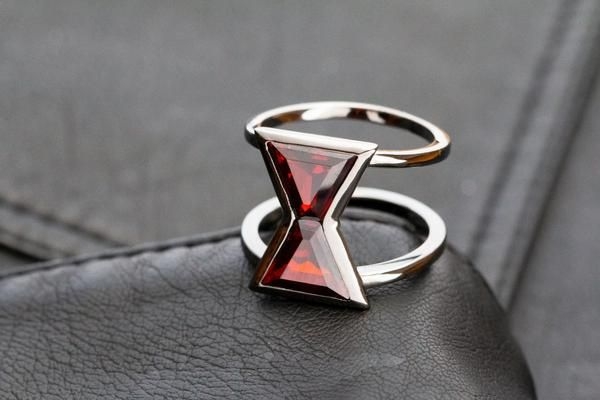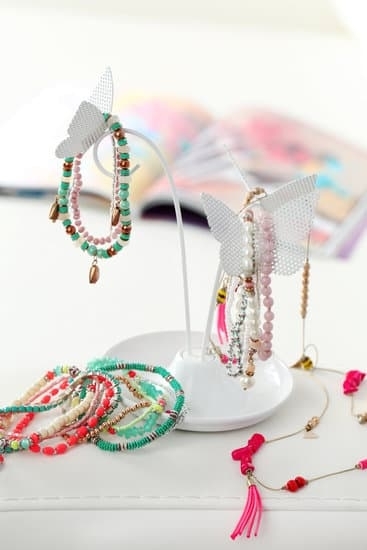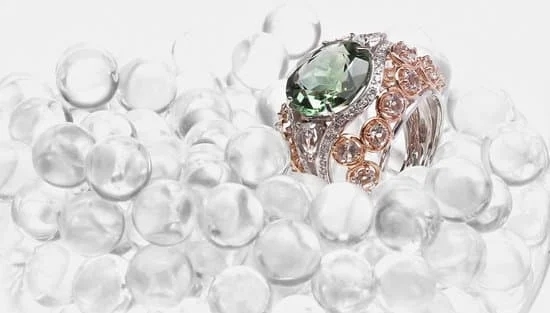The Victorian era, lasting from 1837 until 1901, was a tumultuous period in British history marked by a flurry of economic, political and social changes. Perhaps not surprisingly, these dramatic changes in society had an undeniable influence on the styles of jewelry popular during this part of the 19th century. Jewelry became an increasingly important accessory for Victorian women and its appearance changed dramatically as fashion evolved to reflect the events of its time.
During the early years of the Victorian era, jewelry styles were heavily influenced by artistic movements that emphasized delicate and intricate designs. Women’s jewelry often featured ornate glass stones and enameled details in a variety of colors as a way to soften any bold statement pieces such as brooches or pins.
One of the most popular style features seen in Victorian jewelry was floral motifs, which perfectly encapsulated the idea of romanticism that was so pervasive at this time. These delicate designs became very popular among society ladies and middle-class Victorians alike and remained fashionable throughout much of the mid-century period.
As Queen Victoria’s reign progressed however, there were many more political events that shaped women’s fashion choices with regards to their jewelry. Amid growing nationalism across Europe, symbolism began making its way into everyday accessories such as lockets and necklaces with symbols like crowns featuring heavily alongside patriotic icons like Union Jack flags or seals depicting Britain’s colonies around the globe.
This expression of loyalty soon became de rigueur among members of society looking to show their appreciation for Queen Victoria’s rule while at the same time expressing national pride.
In short, though inspired by art movements from around Europe during its early years, jewelry from the Victorian era ultimately shifted focus from expressions of romance to one of patriotism as flags remained fashionable throughout much of the period amongst both male and female members of courtly circles.
With plenty iconic figures remaining present today-from floral themes to symbolic locks-the legacy left on by jewels made during Queen Victoria’s long reign is truly unique within modern fashion circles even today.
The Rising Social Classes
In the Victorian era of the 1800s, Europe was experiencing an upsurge in the newly available luxury items for members of the growing merchant and middle classes, who had traditionally not been able to access many of these products. One of these widely sought-after items was jewelry from the Victorian era. The stunning pieces created by renowned artisans set a new standard of sophistication and opulence.
The consumer market in Europe consisted largely of blue-collar workers as well as skilled laborers, so this surge in luxury goods allowed many different types of people to access quality pieces that were far removed from their everyday life. And thanks to mass production and advances in materials, it was easier than ever before to create intricate yet affordable Victorian jewelry pieces.
These became incredibly popular with European ladies who enjoyed wearing them as a sign of their sophisticated taste and economic standing.
Victorian jewelry usually featured Lace-like detailing, engravings or embossed designs in gold, silver or brass and ivory was often used for smaller details. Stones such as sapphires, rubies and diamonds were used for adornment, as well as cheaper materials like amethysts or turquoise.
Pearls were also commonly used as they were seen to represent purity and beauty at this time. Women would accessorize with earrings, necklaces and brooches no matter what class they belonged too; however those from more affluent backgrounds could buy bigger and better pieces than those from more modest backgrounds who purchased simpler yet still elegant designs which complemented the period’s fashion sense perfectly.
Materials
Jewelry of the Victorian era had its own distinct style. The metals used were reflection of what was fashionable and popular at the time-silver, gold, platinum, copper, and brass were all used according to trend and preference. Gold was typically the main choice for necklaces and rings due to its rareness and malleability.
Platinum was also a popular metal as it was a strong material that could be formed into intricate designs for statement pieces. Copper also became increasingly popular in the second half of the century because it could be decorative yet still affordable relative to silver or gold.
In terms of precious metals and stones, diamonds were always highly prized by Victorians for their diamond engagement rings, family heirlooms, and statement jewelry like pendants or tiaras. Pearls were also favored during this era as they represented true elegance when crafted in a necklace or hanging earrings.
Additionally, semi-precious gems such as rubies, sapphires and emeralds saw a surge in popularity thanks to the development of more sophisticated cutting techniques which allowed stones to be cut into intricate shapes without sacrificing quality.
It’s quite interesting to note how styles evolved over time during this iconic period in history. Goldsmiths began experimenting with several new techniques that allowed them to create more delicate pieces using thinner layers of metal which brought texture and lightness to connoisseur-style jewelry pieces even better than before.
As mentioned previously, not all materials used during this period of time as precious; some could range from reasonably priced amber beads to colorful crystals which made it possible for tailor-made jewelleries that are personalized according to one’s taste, preferences and budget. This gave way to an abundance of interesting shapes from hearts icons stars which could articulate emotions without necessarily having breaking the bank while still being fashionable fixtures in any wardrobe collection with timeless appeal.
Cultural Art
The Victorian era was a period of great creativity which heavily impacted the jewelry design of that time. A variety of cultural influences for the pieces created can be observed throughout this period in both Europe and America. Native American, Chinese and other world cultures were all represented in pieces made during this time.
Native American motifs were a popular choice, with indigenous tribes from all over the United States having their designs, symbols and ideas would appear on everything from pocket watches to bracelets and brooches. The themes were often intricate with animals, nature and spirituality as recurring features. Whether crafted from pearls, precious metals or ivory they could often be breathtakingly beautiful and a sign of status to those who owned them.
Jewelry crafted by the Chinese during this time also had an influence on European artists in the next century. These artisans used a range of semi-precious stones such as jade, topaz and agate in necklaces, rings and pendants set into filigree gold mounts encrusted with tiny brilliants to mimic stars twinkling against the night sky.
Pieces produced during this era are still highly sought after by collectors today due to their exquisite craftsmanship and rare designs often associated with cultures that no longer exist as they once did centuries before.
Despite technological advances in materials allowing for newer styles compared to former periods, many people still favoured items made from traditional techniques and symbols throughout the Victorian era. Items became common collectables for some wealthy families who could afford such luxuries where no expense was spared when it came to craftsmanship or beauty of design in their pieces.
Symbols
The Victorian era was heavily shaped by symbols. Symbols and motifs were so important during this time, they spoke a language all their own and were used to express how the wearer felt and what they wanted to say. Popular symbols of the Victorian era include anchors, hearts, keys and snakes which told stories of love, strength, security and transformation in addition to some being associated with Christianity.
An anchor was symbolic of hope and stability during this period. It also served as a reminder of faith and trust as it is connected with Christ’s sacrifice saving us from our sins.
This symbol has long instilled feelings of security for a sailor at sea who knows their ship will eventually reach a safe harbor due to an anchor’s steadying power in even the roughest water. An anchor necklace or bracelet speaks of steadiness even during life’s stormier moments.
Hearts have always been ones of the most popular symbols within jewelry throughout history, but they especially thrived within the romanticism that typified much of the Victorian era. They were worn as signifiers of love between families, friendships, spouses, etc., not just relationships that had a romantic nature; everything from mothers to close friends could adorn themselves with these symbols.
The heart remained an important part of jewelry for many years following its popularization in Victorian times; there’s probably no other symbol that is quite so iconic when we think about both jewelry but also representations of affection within our culture.
Keys symbolized unlocking things such as secrets or inner knowledge and understanding during this period in both their physical form as well as through ideational messaging engrained into them. These objects took on new meaning when intertwined with love related symbolism such as locks for one partner and keys for another meant to signify the fullness that resulted when two sides worked together to build something greater than each was capable off achieving by itself.
Today, wearing a key charm still serves as representation if unlocking answers or gaining access that comes with greater understanding or wisdom while keeping secrets close to your heart safe-guarded in your heart-shaped locket or small box locked away with its silver crown like key.
Bespoke Pieces
The Victorian era was known for its unique and exquisite jewelry. During the 1800s, wealthy individuals were willing to spend large amounts of money on custom-made pieces by some of the most talented jewelers of the time. From headpieces and brooches, to long necklaces and lockets, each item was a work of art that conveyed a taste of luxury and quality only obtainable by buying these bespoke pieces.
More often than not, these pieces were met with great enthusiasm by their buyers due to the thoughtfulness behind them. The bespoke design meant that no two pieces looked exactly alike, yet all carried distinctive elements inspired from classic motifs of the era such as animals, nature and religious symbols. With each piece being made for an individual’s preference or specifications in mind, this deepened the sentimentality behind it making it more than just a fashionable accessory.
These one-of-a-kind creates resembled statement pieces much like today; however, there was also a lot of symbolism within small details spread across them. These added touches gave insight into a person’s name or initials to show respectability, prosperity and even social status in some cases – another aspect that emphasized why these designs were so important during this period in history.
Furthermore, many contained precious stones such as diamonds and even colored gems believed to bring luck or protection to the wearer.
Overall, jewelry crafted during the Victorian era served its purpose not only as an ornamental embracement but also as a way of expressing sentiments through intricate designs perfected by expert hands – forming timeless works of art that stand out among all other eras in history.
Collecting and Investment
Jewelry has been an integral part of popular culture for centuries, but during the Victorian era the value of certain pieces skyrocketed. This period saw the rise of industrialization and economic opportunity – allowing many to gain access to jewelry they would have otherwise not been able to afford. During this time, people began collecting historic pieces, with rare gems and precious metals becoming highly sought after symbols of wealth.
For wealthier audiences, using jewelry as a form of investment was another way they could maintain their luxurious lifestyles. Groups like the nouveau riche used diamonds as both ornamentation and currency – strategically purchasing certain stones that had sustained or increased in financial significance over time. Although creating wealth through subtle gem speculation wasn’t always successful, it was still widely practiced by individuals in higher classes who wanted to ensure the stability of their future financial outlay.
The resurgence of Gothic-style jewellery designs combined with motifs like hearts and anchors presented an exciting new range for Victorians wishing to purchase more eccentric items. Even today, many business owners continue to use antique jewelry from this period as well-considered investments at auction houses or as props in historical dramas and films.
It’s clear to see why many view these precious items are objects fit for both nostalgia and wealth building – beautifully combining style with personal gain in one luxurious package.
Conclusion
The Victorian era was a period of great beauty and opulent luxury. The jewelry of this era is no exception, featuring delicate gold and silver designs enhanced with precious stones. From ornate rings to detailed brooches, jewelry in the Victorian era represented a display of wealth and sophistication.
During this time many designs drew inspiration from nature and had intricate craftsmanship that spoke to the skill of the artisans who created it. Women’s jewelry in particular was designed to match each item of clothing perfectly, often using floral designs like roses or lilies to finish off outfits with a dainty feminine touch.
One of the most enduring hallmarks of Victorian jewelry is its versatility and range. Whether you’re looking for something more academic or traditional with diamonds and pearls, or something more liberal such as carved agates – there’s something for everyone’s taste. Antique lavaliere necklaces are especially popular in this period, showcasing ornamentation such as scrolls, dragoons, latticework and more to create a regal look that matches any wardrobe.
Victorian jewelry has also had an indelible impact on fashion today; many contemporary designers have taken cues from its classic design elements when creating their own collections – especially those inspired by vintage looks. From tassel necklaces to rose gold earrings, pieces inspired by the intricate details of 19th century designs never fail to add poise and glamour to modern outfits.
It’s clear that though times may have changed since Queen Victoria ascended her throne back in 1837 – her influence over fashion continues to grow throughout history.

Welcome to my jewelry blog! My name is Sarah and I am the owner of this blog.
I love making jewelry and sharing my creations with others.
So whether you’re someone who loves wearing jewelry yourself or simply enjoys learning about it, be sure to check out my blog for insightful posts on everything related to this exciting topic!





